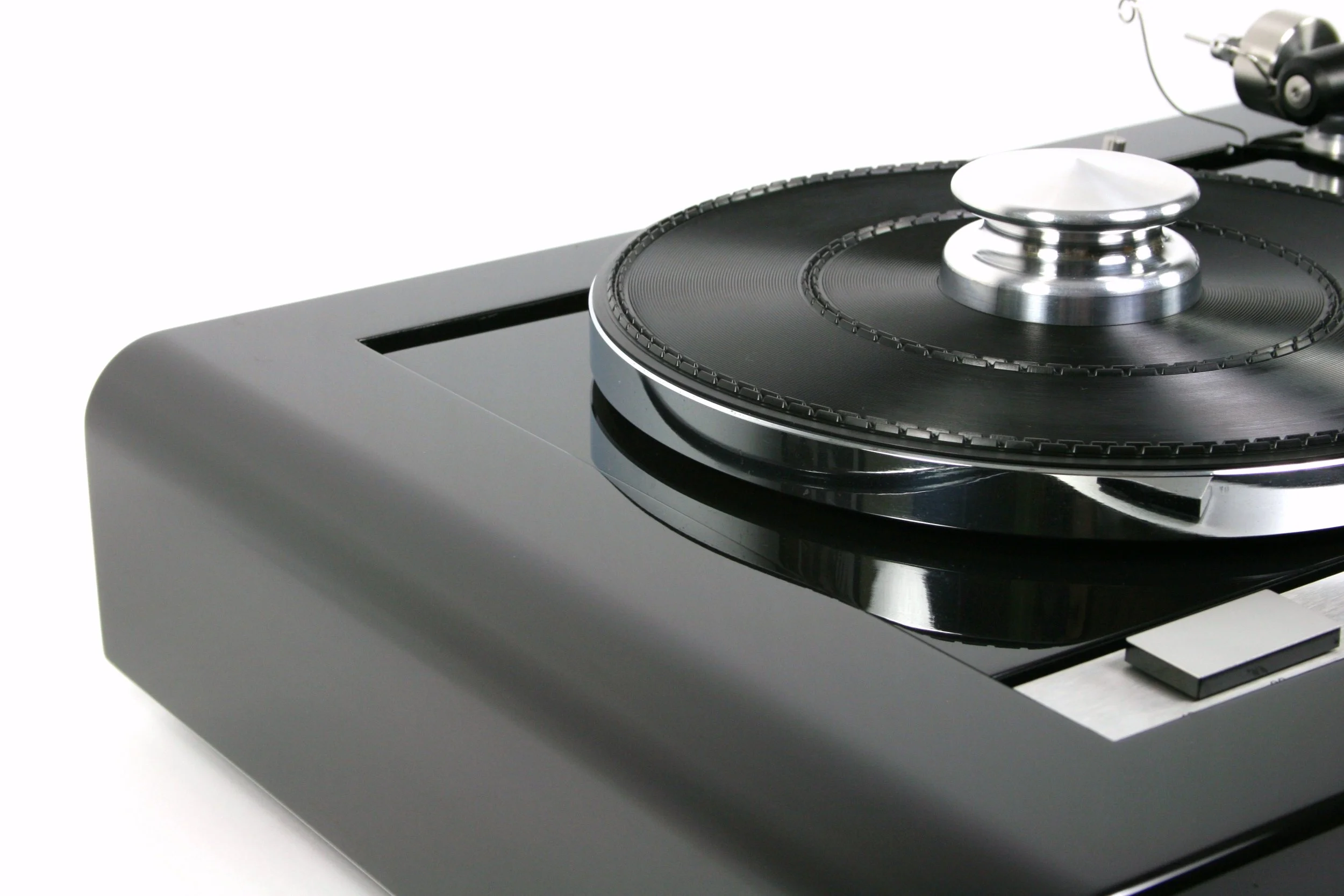Thorens TD 125
Thorens TD 125
Thorens TD 125 Mk1 & Mk2
A brief history:
"TD 125 Mk. I and TD 125 Mk. II (from 1972) first came to the market in 1968 as a legitimate successor of the TD 124. Constructively, the TD 125 had almost nothing in common with his predecessor. It was based on the new technology with a single-stage belt drive and sub-chassis, which had already proved itself in the compact TD 150 since 1965 The much more massive structure, however, left no doubt as to the fact that the TD 125 should follow the footsteps of the famous predecessor. The proximity to the professional broadcasting company EMT, with whom Thorens has worked closely since 1966, may also have been decisive for the study-oriented interpretation of the TD 125, the close cooperation between the two companies became clearly visible in the 1971 EMT 928.
In addition to the basic version (TD 125 AB) designed for 9 "Tonearms, the drive was also available with a large walnut frame, on which even 16" studded arms could be mounted (TD 125 LB). In addition, a variant without frame was available for direct installation, which had to be installed in a mounting frame (CE 509) during installation. The central assembly of the TD 125 is the approximately 7 kg cast subchassis. It accommodates both the (replaceable) audio arm and the large disk drive bearing, and is a visible part of the drive with its upper cover. The subchassis is decoupled from the frame with three damped cone springs and ensures a high sound absorption. The resonant frequency can be influenced by rotating the plastic bearing shells. For professional applications in discotheques it is possible to replace the cone springs of the subchassis with rubber buffers. The motor is detached from the sub-chassis inside the frame on a separate carrier plate.
The first models of the TD 125 have taken over both plate plates and disc bearings from the TD 150. While initially a ball served as a thrust bearing, it is designed as a tip bearing in the later production series. The large bearing housing of the first generation consists of cast aluminum and is attached to the oscillating chassis with three screws. The housing of the second generation is significantly smaller, made of steel and pressed into the chassis.
The remarkable thing about TD 125, however, is its drive system. While the TD 124 and the TD 150 were mainly dominated by mechanical assemblies and parts, the electronics of the TD 125 drive were used to a greater extent for the first time. While Thorens previously used the 50 Hertz power frequency for motor control, the 16-pole 220V AC synchronous motor is now driven by a 2-phase generator with a so-called Vienna bridge. The speed change is carried out electronically by changing the frequency of the motor current (20 Hz for 16 / min, 40 Hz for 33 / min and 55 Hz for 45 / min). Strangely enough, the TD 125 did not use the 78 speed, which is important for shellac plates. The same technology, but in the low-voltage range, was only taken up again in the 1983 series of the 300 series. The compact yet powerful engine delivers comparatively modest 5 watts and brings the 3.2 kg plate drive to the nominal speed in just two seconds (compared to the TD 124's engine has a power of 10 watts). The control electronics, on the other hand, have very high power reserves with up to 20 watts. The low engine speed (250 rpm with a plate rotation speed of 33 / min) combined with the large-sized and high-quality disk bearing ensures a previously unknown tread."
Impeccable no expenses spared Artisan Fidelity restoration featuring many upgrades: internal fixed suspension modification (provides greater impact and dynamics over original stock sprung suspension), natural cork internal dampening, bearing inspection plus micro polish ~ lube, race flush, precision CNC milled aluminum clamp and rebuilt/recapped Wien Bridge Oscillator main controller board. Blue Horizon Cork composite mat shown, new factory Thorens subplatter drive belt, Schurter IEC inlet, Vampire rca's, Cardas Silver solder used throughout, internal solid OFC Copper grounds, Brass adjustable height footers, hand crafted solid two and three inch thick Michigan Maple plinth finished in Artisan Fidelity's signature Midnight Black with striped refinished aluminum top main chassis plate, matched solid Baltic Birch arm board and solid Baltic Birch bottom plate. Professional ISPM-15 stamped certified wood shipping crate provided for worldwide safe transit.







